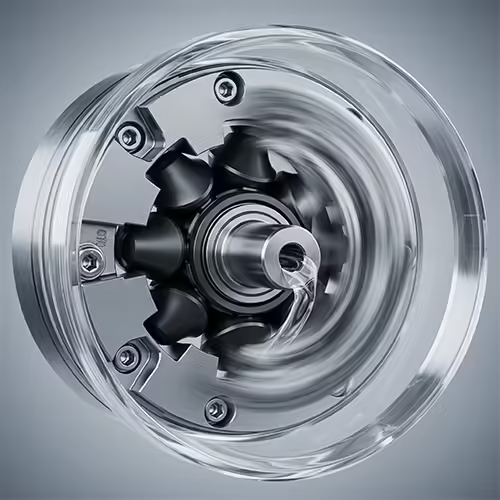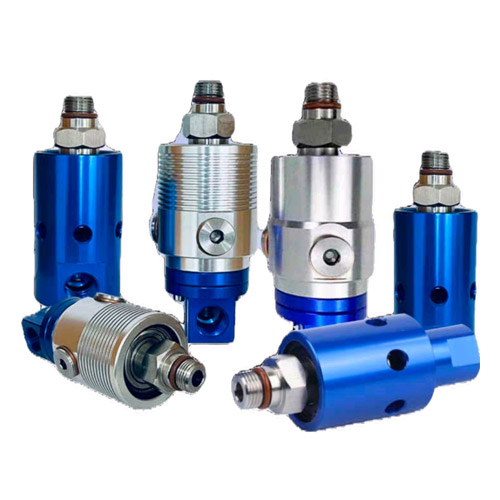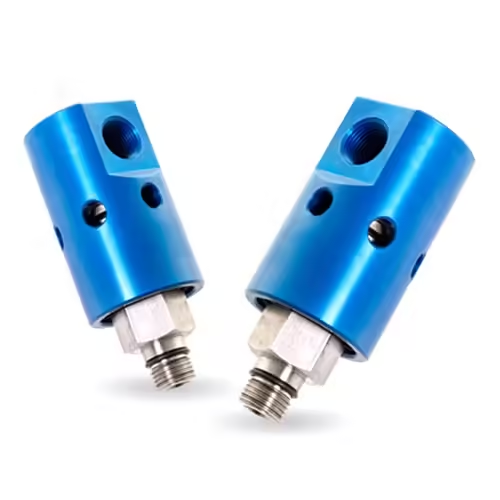Welcome to My Blog!
Before we dive into the content, I’d love for you to join me on my social media platforms where I share more insights, engage with the community, and post updates. Here’s how you can connect with me:
Facebook:https://www.facebook.com/profile.php?id=61575858997962
Now, let’s get started on our journey together. I hope you find the content here insightful, engaging, and valuable.
Table of Contents
Introduction

Not sure how to choose the right fluid rotary joints? When selecting a fluid rotary joint for your plant, are you overwhelmed by the vast array of choices? Choosing the wrong fitting can lead to premature failure, unnecessary downtime and increased costs.
At Modern Seals, we’ve spent years perfecting sealing technology and providing high-performance dynamic sealing solutions, including rotary joints, metal hoses, and other precision-engineered components. With our deep industry insight and patented innovations, we’ll guide you through complex problems and help you make informed, confident choices.
Understanding What a Fluid Rotary Joint Really Does
A fluid rotary joint is a critical component in many industrial systems. It allows the transfer of fluids—such as steam, water, thermal oil, air, or coolant—between stationary and rotating equipment without leakage. These joints are used in everything from paper mills to chemical processing plants.
Why it matters:
- Poor selection can reduce system efficiency by over 30% (Source: Engineering Standards Journal, 2023).
- Downtime due to failure can cost large plants thousands per hour.
Types of fluids supported:
- Steam
- Hydraulic oil
- Coolant
- Compressed air
- Water
Choosing the right joint ensures maximum operational efficiency, safety, and equipment longevity.
Factors You Can’t Ignore When Selecting a Fluid Rotary Joint
1. Operating Conditions: Temperature, Pressure, and Speed
Before selecting a rotary joint, clearly define:
- Temperature range: Can the joint handle high heat (up to 400°C)?
- Pressure range: Does your process involve high-pressure fluids?
- Rotational speed (RPM): Will the joint handle high-speed rotating machinery?
A mismatch between the joint specs and your operating environment is the most common cause of premature failure.
2. Fluid Type and Compatibility
Different fluids demand different materials. For example:
- Steam requires joints with high thermal resistance and proper condensate drainage.
- Corrosive chemicals need stainless steel or specialized coatings.
Always verify material compatibility with your media. Even water can be a problem if untreated.
3. Seal Technology: The Heart of the Joint
The sealing element is what prevents leaks. Depending on the application, you may need:
- Balanced mechanical seals
- Elastomer seals
- Graphite rings
High-end joints often come with self-aligning seals or multi-spring designs for prolonged service life.
4. Maintenance Requirements
Some rotary joints require more frequent service, while others are virtually maintenance-free for years.
Ask yourself:
- Do you have in-house maintenance capacity?
- Is uptime a priority over cost?
Comparing Common Fluid Rotary Joint Options
Here’s a simplified comparison of the most used rotary joints across various industries:
| Type of Rotary Joint | Best Use Case | Temperature Range | Max Pressure | Key Advantages |
|---|---|---|---|---|
| Single-flow Joint | Water, Steam | -20°C to 250°C | Up to 20 bar | Simple design, easy to install |
| Dual-flow Joint | Hydraulic applications | -20°C to 200°C | Up to 25 bar | Compact, high-efficiency return |
| High-temp Joint | Thermal oil, steam | Up to 400°C | Up to 10 bar | Excellent heat resistance |
| Multi-passage Joint | CNC machines, robotics | -10°C to 100°C | Varies | Manages multiple media streams |
| Self-supporting Joint | Textile and paper industry | -10°C to 180°C | Up to 15 bar | Lightweight, minimal maintenance |
Tip: The best choice often depends not just on what fluid is transferred, but also how often, how fast, and under what system pressures.
Why Installation Environment Matters More Than You Think
5. Mounting & Space Constraints
A rotary joint that performs well in one setup may not fit spatially in another. Consider:
- Axial vs. radial space availability
- Pipe routing complexity
- Orientation (vertical/horizontal mounting)
An improperly mounted joint can experience uneven wear, vibration, or early seal failure.
Troubleshooting Signs You’ve Picked the Wrong Rotary Joint


Sometimes the real test is post-installation. Watch for these red flags:
- Excessive heat generation: Seal friction is too high.
- Drips or leaks: Seal or bearing wear.
- Unusual noises: Misalignment or incorrect mounting.
- Short lifespan: Usually indicates mismatch in material or fluid compatibility.
Switching to a properly matched joint can immediately reduce maintenance intervals and downtime by over 40% (Source: Global Plant Reliability Report, 2024).
Conclusion
At Modern Sealing, we’ve worked with thousands of facilities worldwide to deliver high-efficiency, long-lasting dynamic sealing solutions—backed by technical innovation and proven reliability. From precision-engineered fluid rotary joints to flexible metal hoses, our mission is to empower industrial plants to perform at their best, with confidence.
Now’s the time to act. Don’t let the wrong component slow you down. Get in touch with our technical team today to match your plant’s needs with the right fluid rotary joint—and take a step toward reliability, safety, and long-term cost savings.
FAQ
What’s the most common mistake when selecting a fluid rotary joint?
Choosing a joint based only on fluid type, ignoring speed, pressure, and temperature. A well-matched joint accounts for all operating conditions.
How often should a fluid rotary joint be replaced?
Choosing a joint based only on fluid type, ignoring speed, pressure, and temperature. A well-matched joint accounts for all operating conditions.
Can one joint be used for multiple fluid types?
It depends. Some joints can handle different fluids if material compatibility and pressure ranges align. Multi-passage rotary joints are designed for this.
Do I need a different rotary joint for vertical and horizontal setups?
Sometimes, yes. Orientation affects bearing load and seal wear. Always check the manufacturer’s mounting recommendations.
Are all rotary joints the same for air and water?
Not at all. Air systems usually need lighter, faster-sealing joints with tight tolerances, while water systems may demand corrosion-resistant materials.


